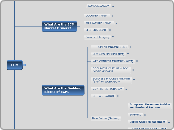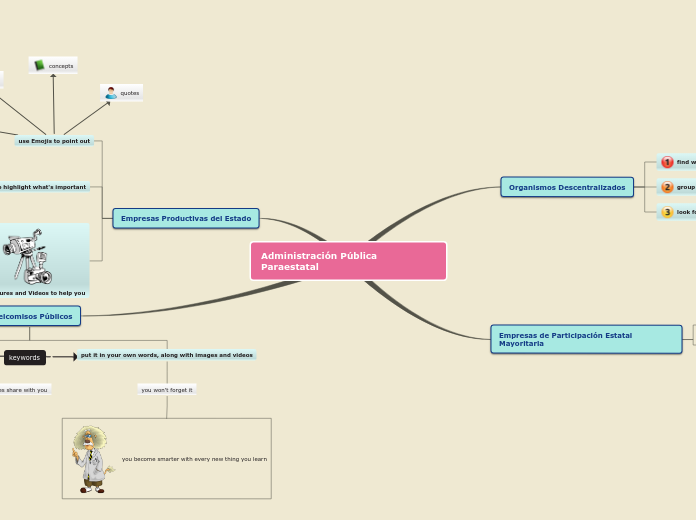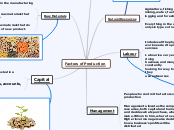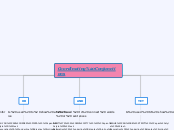ECM
Enterprise Content Management (ECM) is software that helps you organize and control all of the unstructured information in your entire organization. Unstructured information includes all of your content—documents, images, drawings, audio and video files, e-mails, faxes, etc.—in every type of file and format available.
ECM also manages content collected by other
enterprise applications such as enterprise resource planning (ERP), customer relationship management (CRM), supply chain management, and enterprise portals. Offering the user common desktop applications, easy-to-use templates, and simple creation and capture procedures, ECM can also create categorization schema, tags, and metadata that make search and retrieval faster and more efficient.
ENTERPRISE CONTENT MANAGEMENT (ECM)
ECM is a corporate initiative to identify, capture and disseminate unstructured information throughout the company.
ECM is the integration of various technologies and processes to manage enterprise content from conception through deployment.
ECM is not Knowledge Management, which is the process by which companies generate value from their intellectual assets through the efficient sharing of knowledge enterprise-wide.
It's also not document management, which is the effective storage and retrieval of documents. Of course document management is a part of ECM, but it's not the whole.
Conclusion
> reduce the total cost of ownership (TCO) by lowering integration and customization requirements.
> buy from a vendor that will remain viable as markets consolidate, and/or
> make content accessible across multiple applications,
> eliminate the overlapping functions of multiple point products,
> reduce the number of content repositories they support,
> improve compliance and automate vertical processes,
Organizations look to mature ECM systems to
Where Is ECM Going?
Subtopic
What Are the Building Blocks of ECM?
Near Future (Gartner)
E-Mail Archiving and E-Mail Management
for retaining electronic communications in support of compliance
Digital Asset Management
for storing and managing rich media content
E-Forms
for exchanging electronic content
Integrated Document Archive and Retrieval Systems
for documents and reports
COLLABORATION
for sharing, organizing, and controlling document-based collaborative processes; typically, this functionality supports both internal and external team members with a high level of user and document-level security
CONTENT INTEGRATION
for providing data integration capabilities between data sources and target systems for migrating and consolidating repositories without programming or data staging
BUSINESS PROCESS MNGMNT (BPM) or WORKFLOW
for routing content and support- of- business processes; capabilities typically include task assignment, automated tracking (audit trail generation), work state communication (in process, completed, bottleneck, etc.), and graphic representation of the workflow itself
DOCUMENT CAPTURE & DOC. IMAGE MNGMNT
for capturing and managing paper documents and for scanning, indexing, retrieving, processing, and archiving of digital images or paper documents such as invoices, customer claims, electronic forms, graphics, engineering drawings, and photographs
WEB CONTENT MNGMNT (WCM)
for collecting, assembling, and staging content (both graphic and textual) for the purpose of publishing to Websites or intranets; content delivery is automated to streamline the process, ensure traceability, and eliminate bottlenecks
RECORDS MNGMNT (RM)
for long-term archiving and the automation of retention and compliance policies and to ensure legal or regulatory record compliance records management; software for managing long-term retention and disposition policies of corporate records
DOCUMENT MNGMNT (DM)
• for library services such as check-in and checkout, version control, and user and document-level security for business documents
What Are the ECM Market Drivers?
Document Imaging
Process efficiencies, conversion from paper to digital processes in vertical markets outside of traditional imaging strongholds (financial services and insurance) such as healthcare, public sector, travelEnterprise-class organizations’ push for adoption in support of business critical processes (accounts payable, contract management, etc.) across vertical markets
RECORDS MGMT
- North American, Western European agency compliance mandates
and legislation
- Enterprise-wide risk mitigation, compliance, and governance
initiatives by publicly traded organizations and public sector
WEB CONTENT MGMT
- Enterprise-class push for enterprise-wide adoption in support of
Internet, extranet, and intranet
- Economic conditions favoring growth initiatives, reinvestment in
global and regional customer– and partner–facing Web initiatives
- Consumers’ continued growing reliance on the Web as the primary
means of interaction with organizations
DOCUMENT MGMT
- Expansion into underserved vertical and geographic markets (India,
China, Eastern Europe), spurred by entry of larger infrastructure
vendors
- Push for enterprise-wide adoption in support of information worker
needs and the management of office documents across vertical
markets
UNA NECESIDAD ESTRATEGICA
Unstructured content at most organizations is increasing at a phenomenal rate and is resulting in information that is lost, repeated, and/or out- of-date.
Gartner Research (What Constitutes Enterprise Content Management, Gartner, 2004) states that a forward-thinking organization should “Think of enterprise content management as a strategy rather than a project or product.
Plan for a consistent enterprise-wide content architecture. Identify the particular functions you need and ensure that the solution you’re considering integrates them adequately. An ECM suite will make sense for most companies, but vendors differ in the number of components they offer and in the level of integration... ECM is an architecture that integrates functions to
make content accessible enterprise-wide. This approach works best for supporting horizontal business processes, such as compliance, and reducing long-term costs. For these reasons, most companies should implement as ECM strategy even if they start with only one or two core components.”
CONSOLIDACION
An ECM system, which uses a single infrastructure rather than several silo
style content systems, dramatically drops overall costs and increases
security. An ECM repository that can scale to over a billion objects
offers a transaction response time of less than a second.
ROI del CONTENIDO
Employees can waste up to 40% of their workday searching for content
and wrestling with versioning, ownership, and reformatting issues. As a
result, expensive information goes underused or must be recreated.
ECM provides the infrastructure that allows you to control your content.
COLABORACION
Content managed in departmental silos and restricted to certain
geographies prevents distributed teams to share information. As a result,
productivity drops and time-to-market slows. With ECM, people can
create, capture, and distribute collaborative content on the tightest
timeline.
CONFORMIDAD
Virtually all organizations are now legally compelled to securely store and access various content for a defined period of time. ECM enables you to set policies for retaining, storing, and retrieving specific content and mitigate the risk of noncompliance.
DEFINICION
Tecnologias para tratar el contenido y los documentos relacionados con los procesos organizacionales. (AIIM)
PASOS
ARCHIVAR o DESTRUIR
REPARTIR
PRESERVAR
ALMACENAR
GESTIONAR
REVISAR
PROVEER EXACTITUD
VALIDAR
CAPTURAR/CREAR
ADQUISICION DESDE UNA VARIEDAD DE FUENTES
REVISION DE CONTENIDO EXISTENTE
NUEVAS ACTIVIDADES
GESTION DEL CONTENIDO NO ESTRUCTURADO








